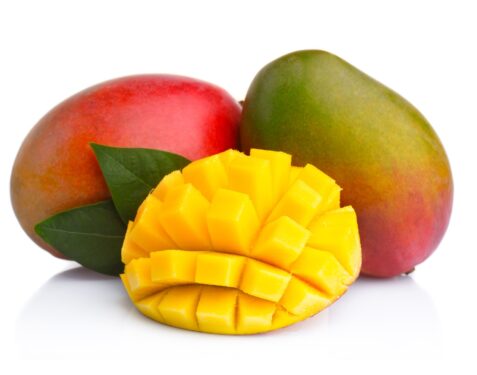
Mango
Mango is one of the oldest fruits that has been cataloged in history. Mango cultivation began in India around 2000 BC and arrived in Brazil through the Portuguese discoverers in the 16th century. It is believed to be the most consumed fruit in the world. And Brazil is responsible for producing more than 1.4 million tons of mangoes, thus being considered the seventh largest producer in the world.
In this year of 2021, among the states that produce the most fruit, we can mention Pernambuco, with 518 thousand tons, Bahia with 442 thousand tons and São Paulo with 206,000 tons. The main production center for mangoes for export and the domestic market is located in the Northeast of Brazil, specifically in the Rio Francisco region.
Mango is one of those responsible for development for the São Francisco Valley
Historically, the Francisco River region has semi-arid characteristics, which did not provide many options for growing mangoes, as it was an area with a large water deficit. However, the production of mango totally changed the scenario, creating a cycle of
economic, social and environmental development, transforming the lives of the people who live there and offering a very high quality fruit and variety of varieties for Brazil and the world. The most exported varieties are Tommy Atkins, Palmer, Kent and Keitt. Cities like Petrolina, in Pernambuco and Juazeiro do Norte, in Bahia, are overdeveloped and are examples of changes and quality of life generated by the fruit-growing economy.
The combination of technology, entrepreneurship and hard work generates thousands of direct jobs and an agricultural activity fully aligned with the modern concepts of sustainability and food safety, in a business that supplies
the biggest markets in the world 12 months a year.
Mango from Brazil is certified by international companies in Good Agricultural and Social Practices, and exported to several countries in the Americas, Europe, Middle East and Asia.
The diversity of varieties, the incomparable flavor, the exotic tropicality and the year-round availability of Brazilian fruit, conquer the palates of the most demanding consumers around the world. In 2020, there were more than 240 thousand tons in exports of this fruit alone.
All of its versatility makes people look for it more and more, as it can be consumed as fresh fruit, in the form of juices, jellies, vitamins, in a green salad, with sauces, or even with other foods.
The mango is rich in:
- Vitamins A and C: Strengthens the immune system, working to prevent disease. Vitamin A is important for the integrity of the skin and mucous membranes. Vitamin C, on the other hand, prevents damage to the body’s cells and also increases immunity. In 100 grams of mango there is an average of 15.8mg of vitamin C and 23 µg of vitamin A.
- Fiber: relieves constipation and bowel function
- Antioxidants and Polyphenols such as mangiferin, camperol and benzoic acid: contribute to the proper functioning of the arteries and balance the heart rate and LDL cholesterol levels – one of the major causes of heart attacks.
- Magnesium: helps fight high blood pressure.
- Potassium: together with magnesium helps to reduce high blood pressure and antioxidant power.
- Carotenoids: are substances that give the fruit the yellow color, and are rich in vitamin A, an important component for vision.
- Glutamic acid: an important amino acid that helps the brain function properly, increasing concentration and improving memory.
Eat mangoes from Brazil, enjoy flavor, health and well-being and contribute to an agricultural model committed to sustainability.




